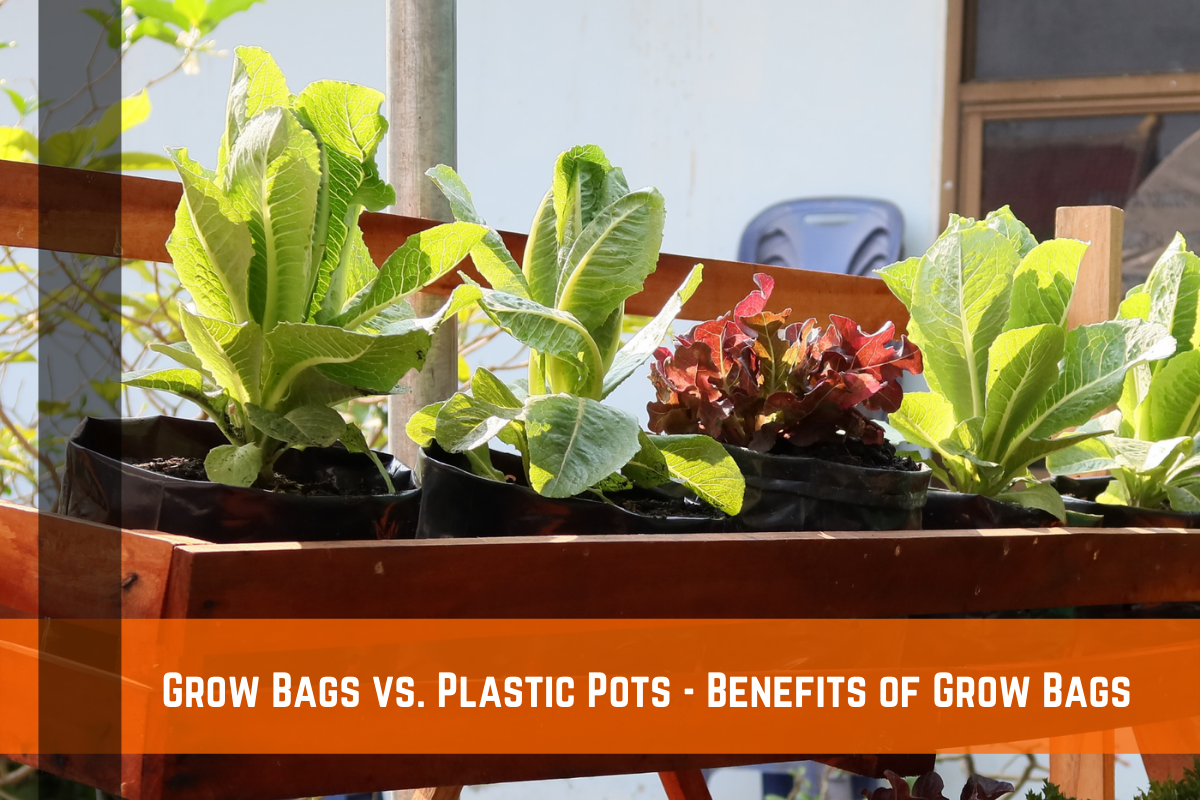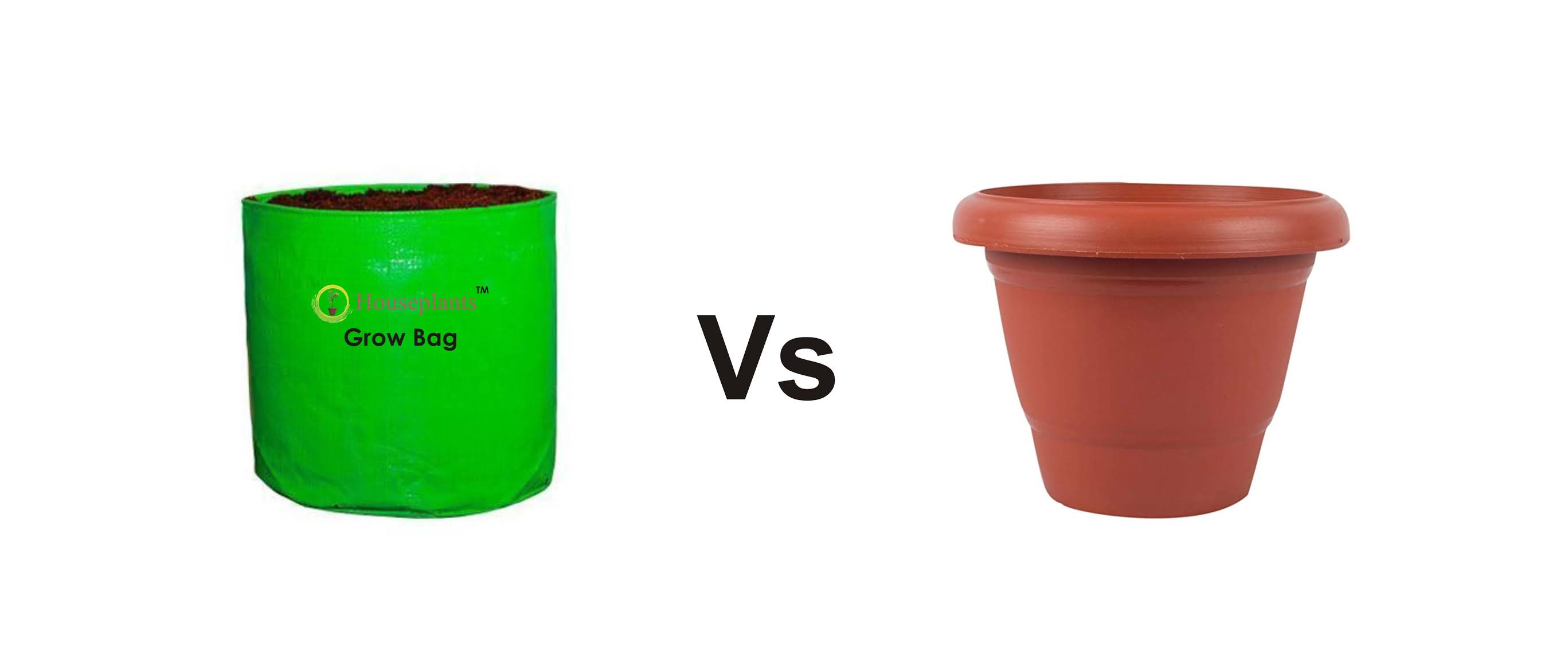Plant grow bags vs pots – Plant grow bags vs. pots: which is the better choice for your gardening needs? This is a question that has been debated by gardeners for years, and there is no easy answer. Both grow bags and pots have their own advantages and disadvantages, and the best choice for you will depend on your specific needs and preferences.
In this article, we will take a closer look at the pros and cons of plant grow bags and pots, and we will help you decide which type of container is right for you.
Comparison of Plant Grow Bags and Pots

Plant grow bags and pots are two common containers used for gardening. Both have their own advantages and disadvantages, so it’s important to choose the right one for your specific needs.
Whether using plant grow bags or pots, it’s important to choose the right containers for the specific plants you’re growing. For example, ramp bulbs for planting need well-drained soil and plenty of space to grow, so they’re best suited to large pots or grow bags with drainage holes.
When choosing between grow bags and pots, consider factors such as size, portability, and drainage.
The following table compares the two types of containers in terms of material, size, drainage, aeration, and cost:
| Feature | Grow Bags | Pots |
|---|---|---|
| Material | Fabric or plastic | Clay, plastic, or metal |
| Size | Can be any size | Limited to the size of the pot |
| Drainage | Excellent | Good, but can be improved with drainage holes |
| Aeration | Excellent | Good |
| Cost | Less expensive than pots | More expensive than grow bags |
Advantages and Disadvantages
Grow bags are a good choice for plants that need good drainage and aeration, such as tomatoes, peppers, and cucumbers. They are also lightweight and easy to move around, making them ideal for container gardening. However, grow bags are not as durable as pots and can be easily damaged by wind or animals.
Pots are a good choice for plants that need more support, such as trees and shrubs. They are also more durable than grow bags and can withstand wind and animals. However, pots can be heavy and difficult to move around, making them less ideal for container gardening.
Factors to Consider When Choosing Between Grow Bags and Pots

When selecting between grow bags and pots for your plants, several key factors must be taken into account to ensure optimal growth and success. These factors include the plant’s size and root structure, the available growing space, and your budget.
Plant Size and Root Structure
The size of the plant and its root structure will determine the appropriate size and type of container. Plants with extensive root systems, such as tomatoes and cucumbers, require larger containers to accommodate their root growth. Choose grow bags or pots that are deep enough to allow for adequate root development.
Growing Space
The available growing space is another important factor to consider. If you have limited space, grow bags can be a great option as they can be easily stacked or hung vertically. They are also portable, making them suitable for balconies or small gardens.
Budget, Plant grow bags vs pots
The cost of grow bags and pots varies depending on the material, size, and features. Grow bags are generally more affordable than pots, but they may not be as durable. Consider the long-term investment and choose the option that fits your budget and needs.
Material and Size
The material of the grow bag or pot can also impact plant growth. Fabric grow bags allow for good drainage and aeration, promoting healthy root development. Plastic pots retain moisture better but can restrict root growth. Choose the material that is most suitable for the specific plant and growing conditions.
The size of the grow bag or pot should be appropriate for the plant’s size and root structure. Avoid using containers that are too large or too small, as both can hinder plant growth.
Case Studies and Best Practices: Plant Grow Bags Vs Pots

Grow bags and pots have both been used successfully for plant growth. Here are some case studies and best practices to consider when choosing between the two:
Case Studies
- A study by the University of California, Davis found that tomatoes grown in grow bags had higher yields than those grown in pots. The study also found that the tomatoes in grow bags were less likely to develop diseases.
- A study by the University of Arizona found that peppers grown in grow bags had larger fruits and higher yields than those grown in pots. The study also found that the peppers in grow bags were more resistant to pests.
Best Practices
When using grow bags, it is important to choose a bag that is the right size for the plant. The bag should also have good drainage holes. It is important to water the plants regularly, but avoid overwatering. When using pots, it is important to choose a pot that is the right size for the plant. The pot should also have good drainage holes. It is important to water the plants regularly, but avoid overwatering.
Troubleshooting Common Problems
- If the plants are not growing well, it may be because the bag or pot is too small. Repot the plant into a larger container.
- If the plants are wilting, it may be because they are not getting enough water. Water the plants more frequently.
- If the plants are yellowing, it may be because they are not getting enough nutrients. Fertilize the plants.
When comparing plant grow bags and pots, consider the specific needs of your plants. For large-scale planting, the 1/32 john deere planter offers precision and efficiency. Click here to explore this innovative tool. Returning to the topic of plant grow bags vs pots, remember that grow bags provide better drainage and aeration, while pots offer more stability and temperature control.
The choice between plant grow bags and pots depends on the specific plant’s needs. For instance, olives thrive in well-drained soil, which is why grow bags are often preferred for their superior drainage. To learn more about olive tree planting techniques, refer to the comprehensive guide como se planta el olivo . While pots can be used, their restricted drainage may necessitate more frequent watering and monitoring of soil moisture levels.